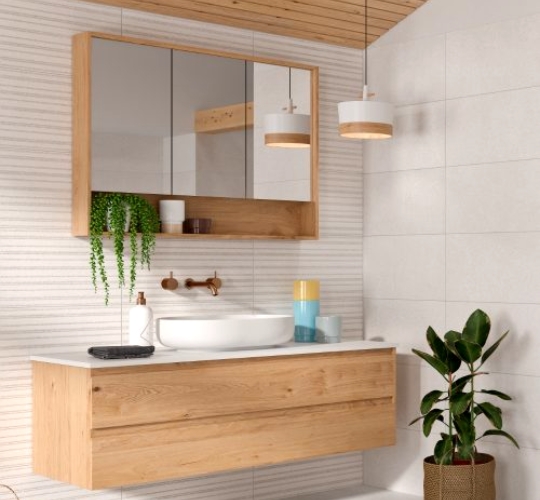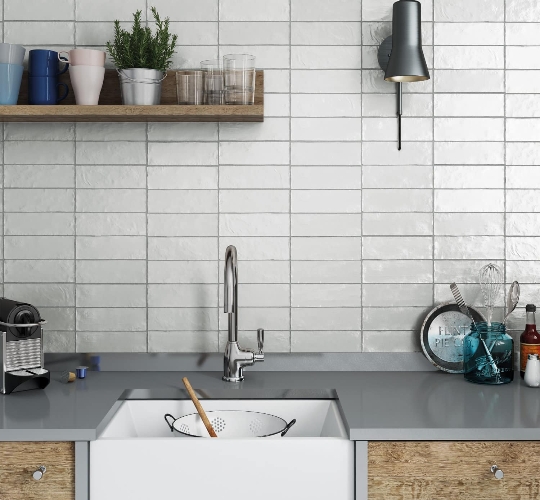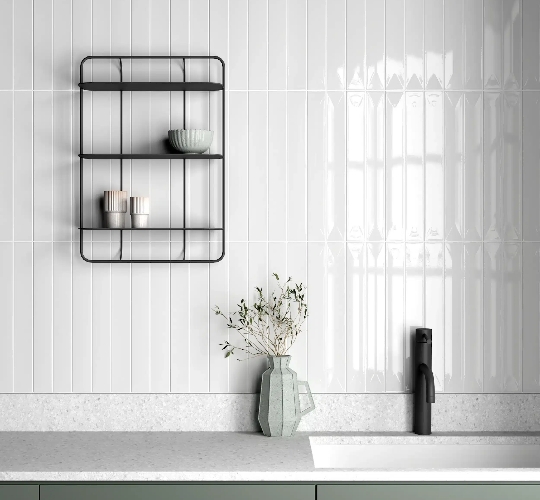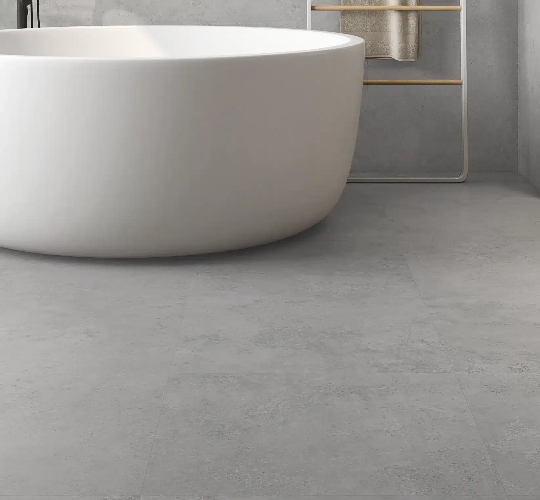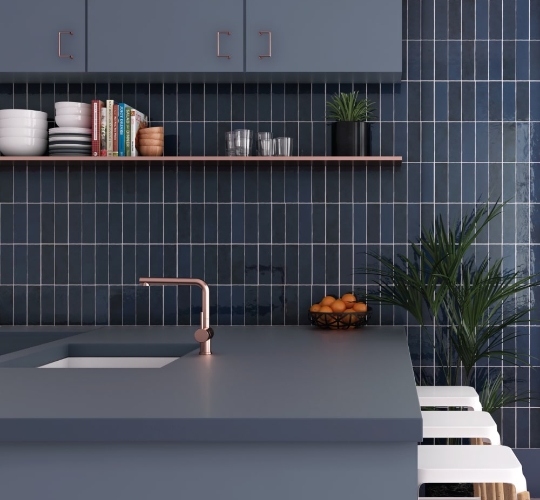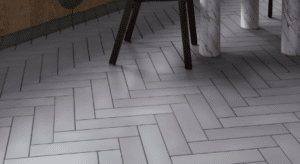Porcelain vs. Ceramic Tiles
When you’re introducing the beauty of tiles to your bathroom, kitchen, or any other living area, it can be difficult to know what tile to use. Often, people are bombarded with tiling terminology which can puzzle them. Should you use porcelain or ceramic? Are they basically the same thing? What’s the difference between the two? Which one is better?
You’re not alone. We always get asked questions similar to this and understand it can be confusing. So, to help, we have prepared this blog to help make things simple and help you decide which tile you need for your home.
The Difference
So what’s the difference? Well, the main difference between the two lies in the type of clay used in their production. Ceramic tiles (like our Mersey range seen left above) are manufactured from either red or white clay, to which a glaze is then applied, and fired (cooked) at high temperature which removes the water content. The end result is a tile which is relatively easy to cut and these days mainly used for wall tile areas although some ceramic tiles are made to be suitable for floors so check if this is their purpose.
Porcelain tiles (like Belvoir right above) are manufactured in a similar way, using white porcelain clay with a feldspar content allowing it to be fired at much higher temperatures practically eliminating all the water content. The end result is a much denser, durable tile suitable for floor and wall areas. Because porcelain allows for a wider range of designs, is more durable and contains higher grade clay it tends to be a little more expensive and is harder to cut. As it absorbs almost no moisture porcelain tiles must also be fixed using an enhanced cement based adhesive. For walls areas, there is no particular advantage in using porcelain over ceramic tiles but on floor areas, porcelain is recommended as it is harder wearing.
There are two variations of porcelain tiles – glazed porcelain tiles and throughfull-body porcelain tiles. We know it’s more tiling terminology, but we’ll explain. Glazed tiles, as the name suggests, have a glaze applied on top of the tile which gives the tile its pattern and colour, whereas full-body tiles have the same design and colour throughout. Normally full bodied porcelain tiles are used in very high traffic commercial areas or outside areas. Glazed porcelain is perfectly suitable for interior domestic and many commercial areas.
Take a look at our Porcelain tiles.
Which One Is Right For You?
If you’re looking to tile your walls or a floor that doesn’t get much traffic (like upstairs bathrooms), then ceramic tiles are fine but if you prefer the look of a porcelain tile for the wall that is ok too. In other words for wall areas choose the design that suits the look you want and the budget you have to work to. That’s their ideal purpose since they’re resistant to stains, fire heat, refuse to fade in sunlight and can be cleaned really easily.
The best characteristic of porcelain tiles is their design, durability and resistance making them perfect for both wall and floor areas and especially suitable for floor areas with high use both domestically (so all floor areas in the home) and commercially in restaurants, pubs, offices and shops and can withstand greater demands than ceramic tiles. While they may cost more initially, it can save you money in the long run as when used on the floor they are likely to have a much longer life than a ceramic tile.
See some of our Ceramic tiles.If you’re still unsure or have questions, just ask us! Visit one of our showrooms and talk to our staff who will be happy to help, give you advice, and point you in the right direction of which products you need!
Return To Inspiration

